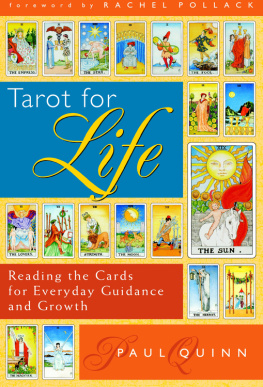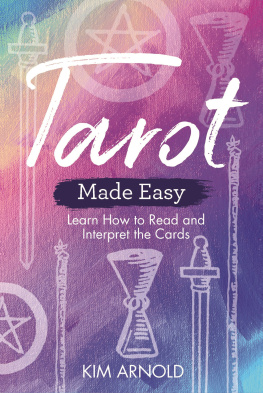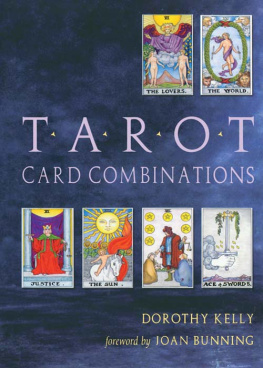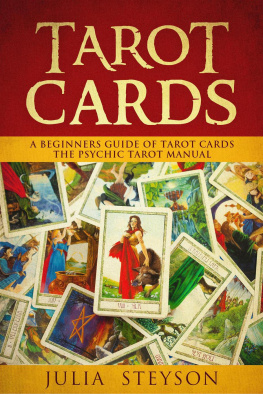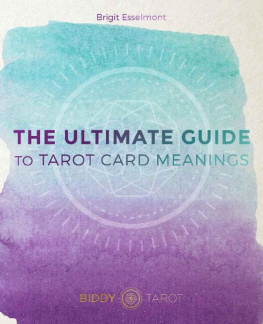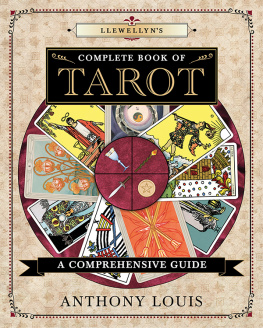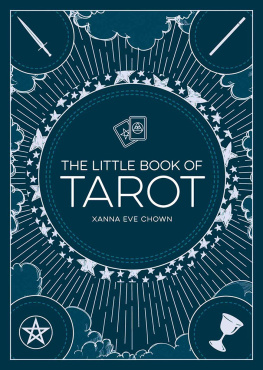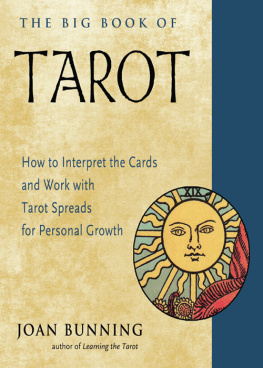

Tarot for Life
Reading the Cards for Everyday Guidance and Growth
Paul Quinn

Learn more about Paul Quinn and his work at http://tarotforlife.net and www.thespiritedlife.com
Find more books like this at www.questbooks.net
Copyright 2009 by Paul Quinn
First Quest Edition 2009
Quest Books
Theosophical Publishing House
P. O. Box 270
Wheaton, IL 60187-0270
Without limiting the rights under copyright reserved above, no part of this publication may be reproduced, stored in or introduced into a retrieval system, or transmitted, in any form, or by any means (electronic, mechanical, photocopying, recording, or otherwise), without the prior written permission of the publisher of this book.
The scanning, uploading, and distribution of this book via the Internet or via any other means without the permission of the publisher is illegal and punishable by law. Please purchase only authorized electronic editions, and do not participate in or encourage electronic piracy of copyrighted materials.
While the author has made every effort to provide accurate telephone numbers and Internet addresses at the time of publication, neither the publisher nor the author assumes any responsibility for errors or for changes that occur after publication. Further, the publisher does not have any control over and does not assume any responsibility for author or third-party websites or their content.
The author of this book does not dispense medical advice or prescribe the use of any information as a form of diagnosis or treatment for physical, emotional, or medical problems without the advice of a physician or therapist, either directly or indirectly. The intent of the author is only to offer information of a general nature to help you in your understanding of the Tarot as a tool for your own intuitive exploration. In the event you use any of the information in this book for yourself, which is your constitutional right, the author and the publisher assume no responsibility for your actions.
Except where the author's friends are identified, the names of the students and clients featured in the anecdotes throughout this book have been changed to protect their privacy.
Illustrations from the Universal Waite Tarot Deck reproduced by permission of U.S. Games Systems, Inc., Stamford, CT 06902 USA. Copyright 1990 by U.S. Games Systems, Inc. Further reproduction prohibited. The Universal Waite Tarot Deck is a registered trademark of U.S. Games Systems, Inc.
Cover design by Beth Hansen-Winter
Library of Congress Cataloging-in-Publication Data
Quinn, Paul (Paul Reid).
Tarot for life: reading the cards for everyday guidance and growth / Paul Quinn.
Includes bibliographical references.
ISBN 978-0-8356-0879-4
1. Tarot. I. Title.
BF1879.T2Q46 2009
133.32424dc22 2008052129
ISBN for electronic edition, e-pub format: 978-0-8356-2033-8
5 4 3 2 * 9 10 11 12 13 14
For my Queens of Wands
Jan Harris
Patricia Hock
Rene Sutor
Contents
Foreword
P aul Quinn and I share a birthdayalong with a legendary Tarot reader from Melbourne, Australia; a cartoonist and Wonder Woman scholar in San Francisco; and Mae West and Davy Crockett. A varied group, to be sure, but I think theres a common thread here (leaving myself out of this appraisal): a down-to-earth quality, a love of frontiers and new experience, and fresh ways of looking at things. What did Mae West say? If I have to choose between two evils, I choose the one I havent tried yet.
Pauls approach to Tarot involves the esoteric and the mystical, along with Jungian psychological theory, but none of these qualities ever shows up just for itself, to impress or to be obscure for its own sake. They always serve those most vital of subjects, who we are and how we cope with our lives.
Its very easy for books on Tarot to get lost in themselves and become so abstruseso occult, which is to say, hiddenthat only a handful of people can understand them. There are good reasons for this, actually. Whatever the Tarots origins close to six hundred years ago, over the last two hundred and thirty it has become part of a tradition known as Hermeticismthat is, complex and philosophicalthat makes dense symbolism a thing of great beauty. However, its not easy to present such material in a way that ordinary people can follow.
Coming from the other direction, too many Tarot books dumb down the subject, ignoring the deeper levels in favor of formulaic meanings for every card. Whats harder, obviously, is to do both, to make the esoteric not only accessible but in service to people who want to understand the cards for that most practical of purposes, readings. The ability to do this is what makes Pauls book satisfying and exciting.
Ive said it before and will probably say it againthe world is full of beginners Tarot books, so why would we need another one? Because this book is useful. It not only explains the cards in very direct ways, it shows the Tarot in action, in peoples lives, through examples and the stories Paul tells from his experiences as a reader, as a teacher, and as someone who has used the cards to help guide his own life. This book is not just theory; it comes from someone who knows.
Paul shares his experiences, but he gives us information as well. I have studied and worked with the Rider deck, that great classic bestseller of Tarot, for nearly forty years, yet as I read this book I was delighted to discover details of its symbolism that were either new to me or forgotten. From the very rst card description, the Fool, I learned that the circles on his tunic add up to nine, the nal single digit, and thus a symbol of completion, and, because they are circles, wholeness. And since part of the joy of symbolism lies in the ability to spark ideas from one person to another, I might add that nine is the number of pregnancy, so that the famously androgynous Fool could be described as giving birth to himself.
Something else I learned concerns the card of the Empress. Its fairly well known that some older decks, inspired by the French Revolutions overthrow of monarchy, changed the cards name to Juno, the Roman goddess who was queen of heaven in the classical world. Thus she changed from a symbol of earthly powerthe original Empress and Emperor borrowed imagery from the Hapsburg Empireto one of spiritual beauty, a quality shes kept ever since in Tarot interpretation. But now Paul reveals to us that another name for Juno, Moneta, gave us that all-important word, money. Thus the Empress card becomes a symbol of the nancial world and its importance in our lives. The card returns, in a way, to its original meaningwho had more money than the Hapsburgs?but now with its spiritual truths intact, so that money and power gain a wider context. This is something Ive learned about Tarot, the ability to layer symbolism as it passes back and forth from one person to another.
I paid special attention to the Empress description because, at the beginning of the book, Paul suggests we shufe the Major Arcana and pick a card for what aspect of ourselves this book is inviting. I got the Empress, and I have been thinking about it for days. With each Major card, Paul gives us a series of questions to ponder. The ones for the Empress go beyond facts and ideas to challenge us to look at the place of kindness and compassion in our lives. And, of course, to look at the role money plays.
Next page
